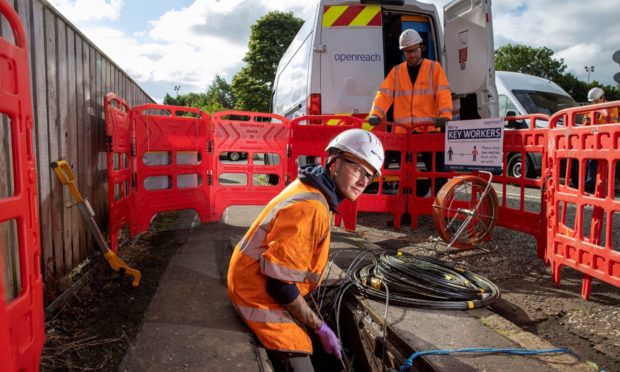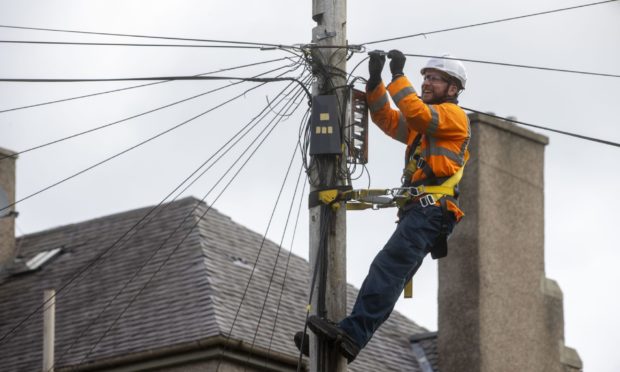Tayside and the Scottish islands have the worst access to full fibre broadband in the nation, according to new research.
Government ministers were urged to act after the “sorry state” of the roll-out was exposed in a study that has been released today.
Scotland currently enjoys 94.6% coverage of “superfast” broadband, providing speeds of 30Mbps or higher.
But full fibre, which can be much faster, is only available to 20.5% of premises, according to a study by Compare Fibre and Think Broadband Labs.
A league table compiled as part of the research shows the areas with the best coverage are Stirling at 51.9%, Edinburgh with 45% and Aberdeen at 42.2%.
However, the worst performers were Orkney with 0.9%, Shetland at 1.2%, West Dunbartonshire on 1.3%, Argyll and Bute on 1.8%, Dundee with 2.8% and Angus at 3.3%.
The Western Isles were not far behind, on just 3.9%, followed by Perth and Kinross at 4.9%.

Other areas nearer the middle of the league table were Aberdeenshire with 9.6% coverage, Highland on 12.6%, Moray on 17% and Fife at 22.4%.
Nathan Hill-Haimes, co-founder of Compare Fibre, said: “These figures clearly show the sorry state of full-fibre broadband provision in some areas of the UK.”
He said one reason for the disparity was that the larger providers were targeting the same areas, known as overbuilding, while ignoring others.
Government minsters need to sit up and take notice of what is really going on here.”
“Too many customers are being targeted by the same companies leaving others with little or no choice,” he said.
“Government minsters need to sit up and take notice of what is really going on here.”
An Openreach spokeswoman said: “Openreach is the only digital network building full fibre at scale in the hardest-to-reach ‘final third’ of the country.
“We’ve announced plans to invest in 70 rural towns and villages across Scotland, including Aviemore, Thurso, Findochty and Lossiemouth.
We’ve announced plans to invest in 70 rural towns and villages across Scotland, including Aviemore, Thurso, Findochty and Lossiemouth.”
“We’ve just been given the go ahead to extend our build to 25m premises across the UK by 2026, and we expect to have more good news for rural locations soon.
“Our poles and ducts are open for business to any provider who wants to come and join us in supporting rural communities. In fact, 125 operators of all sizes are actively exploring the possibilities across the UK.”
A spokesman for the UK Government’s Department of Culture, Media and Sport said: “When it comes to broadband, we believe people care about speed and reliability – not the tech that delivers it.
“Full fibre is just one way of providing the gigabit-capable connections homes and businesses will need for the future.
“More than 40%of the UK can now access these lightning fast speeds and, with one of the fastest build rates in Europe alongside a record £5 billion in government funding to connect hard to reach areas, we’re on track to have at least 85% of the UK covered by 2025.”
